

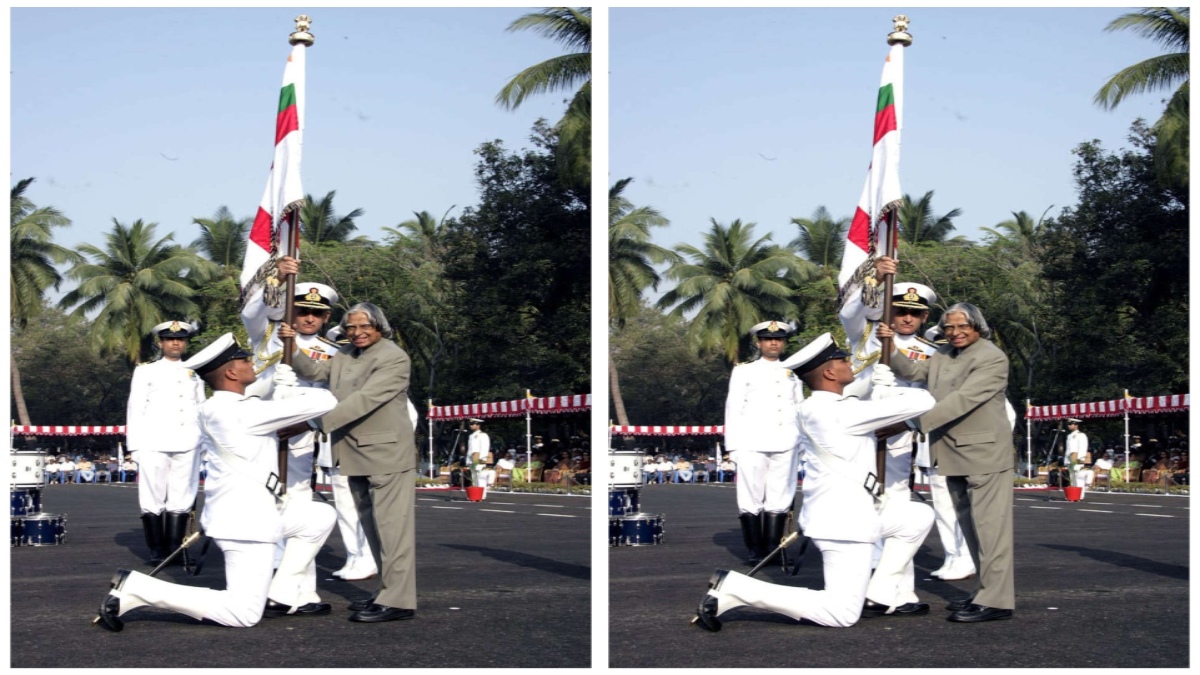
Indian Navy’s sword arm on the Eastern seaboard, the Eastern Fleet, was born on 01 Nov 1971 as war seemed imminent and clouds of conflict hovered over the subcontinent. The Fleet played a decisive role in the maritime domain holding sway in the Bay of Bengal and strangulating then East Pakistan from the sea, thus contributing to the denouement of the surrender in Dacca on 16 Dec and the capture of more than 90,000 prisoners of war. Having had its baptism by fire and come out glorious through it, the Eastern Fleet, also called the ‘Sunrise Fleet’, has grown by leaps and bounds over the years to become a formidable combatant force. Today, as it celebrates its golden jubilee, here is a look at its journey through some salient points.
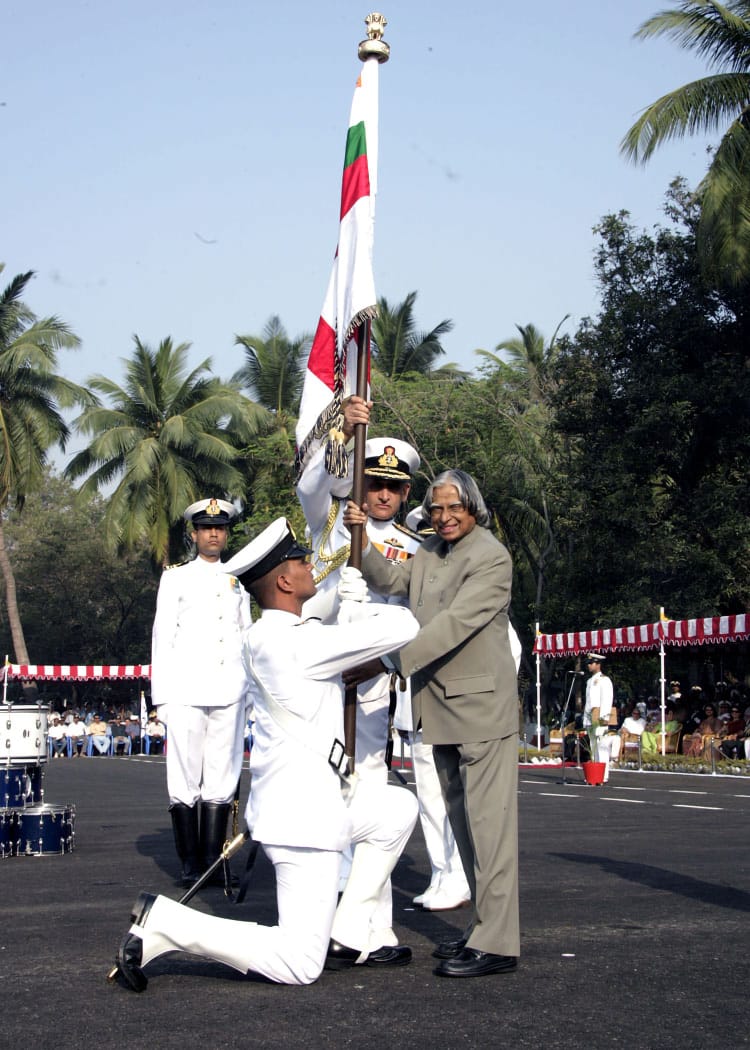
Visakhapatnam, on India’s East Coast, has a commanding view of the waters of the Bay of Bengal. It came into prominence during World War II (WW) when the British set up a small naval base in December 1939. Expanding gradually after Independence, she became the Navy’s Eastern Naval Command (ENC) Headquarters in March 1968. Naval planners at Delhi had envisaged a two Fleet Navy, on either seaboard, right from independence. However, financial and other constraints delayed that vision becoming reality. Hence, the Eastern Fleet finally came into being on November 01, 1971. At its inception, considering the strategic scenario, the Eastern Fleet was a ‘make shift’ assembly of few ships, namely – the aircraft carrier Vikrant, anti-aircraft frigates Brahmaputra and Beas, Petya class anti-submarine ships Kamorta and Kavaratti, a WW II destroyer Rajput, amphibious ships Magar, Gharial and Guldar, and a requisitioned tanker Desh Deep. It was this small force that was to bring glory to the navy and nation in the days to come.
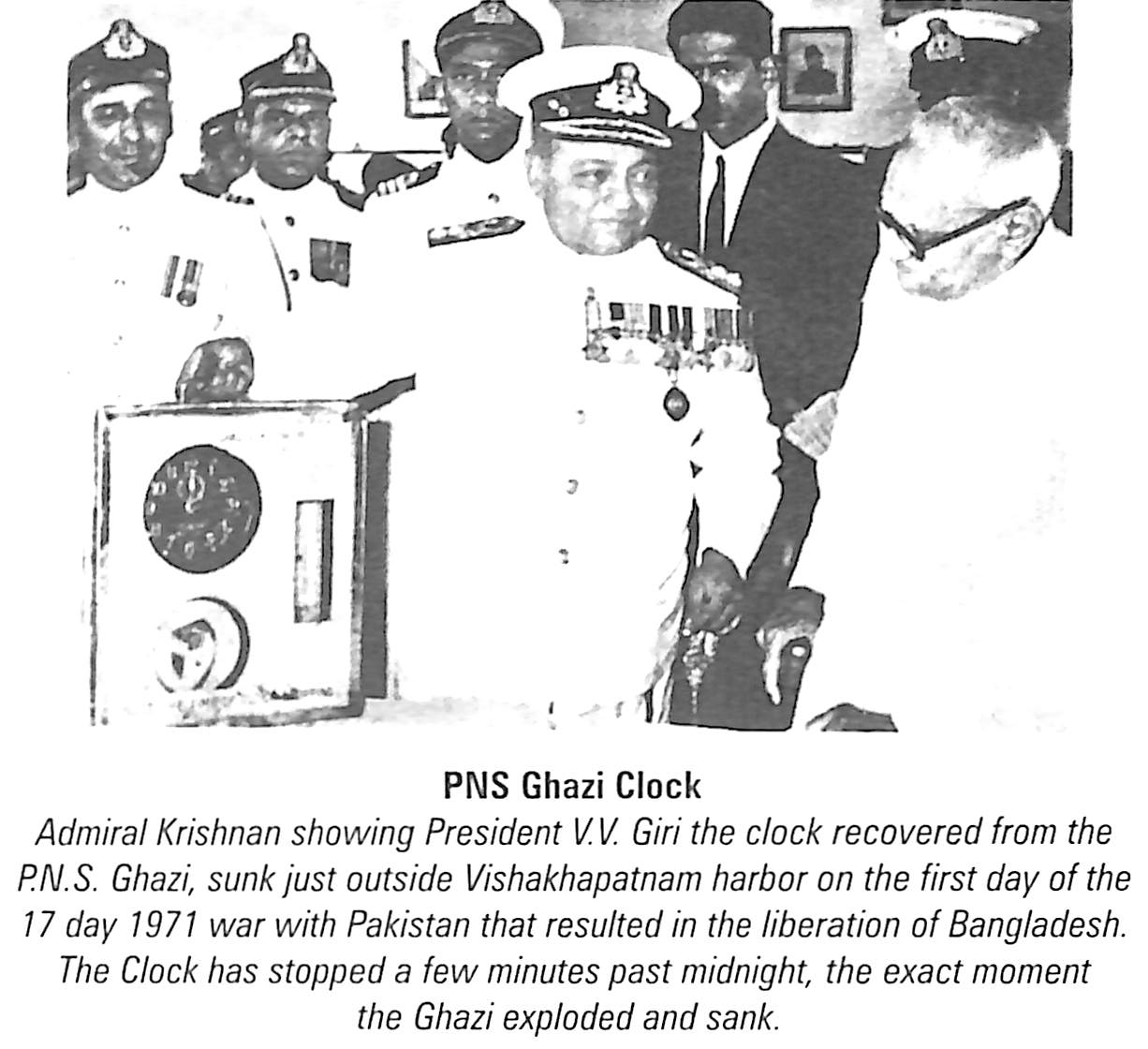
Soon after the pre-emptive action by Pakistan in the West on 03 Dec, the Fleet received orders to carry out air attacks on Cox’s Bazaar and Chittagong the very next day. Because of what followed over the next fortnight, Bangladesh was born. Vikrant proved to be the centre piece of all operations and enabled the Eastern Fleet to dominate the Bay of Bengal and seal off escape routes of Pakistani forces, contributing in large measure to the overall success in the Eastern theatre. Consequent to relentless air and surface operations by the Fleet, the entire coastline of East Pakistan (Bangladesh) came under its control by December 12, 1971. The Fleet had destroyed enemy bases and strangulated its logistics lines with successful contraband control. Fleet ships had also captured many ships fleeing with Pakistan soldiers and their families; thereby, any escape of enemy was successfully prevented. In addition, on cessation of hostilities and creation of Bangladesh, the Eastern Fleet played a role in helping Chittagong and its harbour regain normalcy.
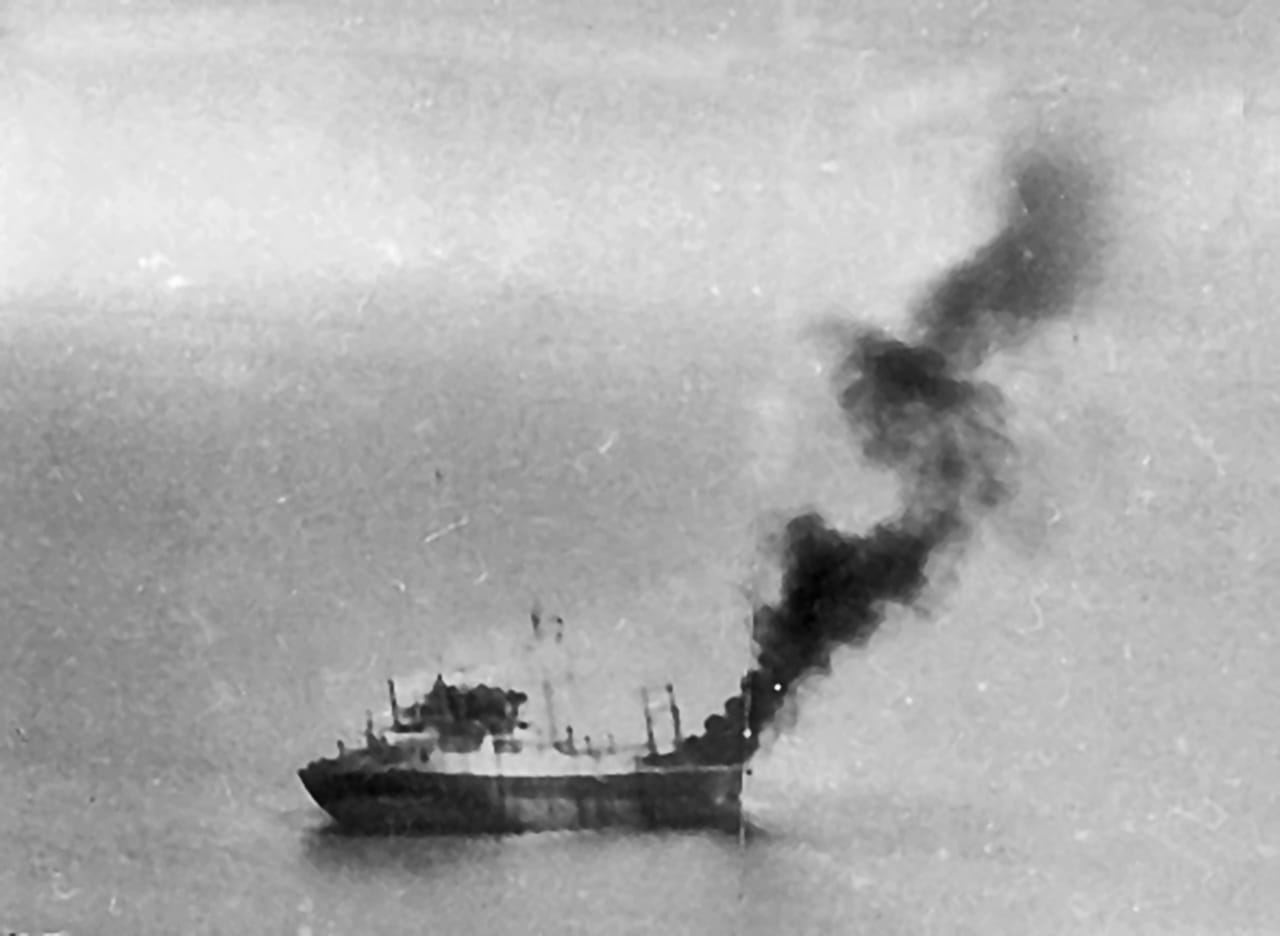
Having proved its mettle in the 1971 war, the Eastern Fleet started consolidating and reviewing its force structuring through the 70s and 80s. The Petya class (which had expanded to 10 ships by mid 70s) and the amphibious ships formed the nucleus of the Eastern Fleet for a long time. The mid 80s saw the transfer of the indigenously built Giri class frigates from the Western Fleet to the Eastern Fleet. This bolstered her Anti-Submarine Warfare capabilities and provided much needed punch. These frigates were invaluable in all operations for the larger part of the 80s and 90s. And the Eastern Fleet saw a fair amount of operations in these two decades

Operation ‘Brasstacks’, a major tri-service exercise from January to March 1987 along our Western land borders and seaboard, saw large scale mobilization where units of the Fleet were deployed across the coast sustaining themselves at extended ranges for prolonged durations. A bigger challenge was to come few months later. The Eastern Fleet spearheaded Operation ‘Pawan’, to support the Indian Peace Keeping Force (IPKF) deployed in Sri Lanka between July 1987 and March 1990. Pawan came to become India’s longest Peace Support Operation (PSO). Indian ships provided operational and logistic support to Army and Naval forces deployed there and maintained continuous patrols in the Palk Strait and along Sri Lanka’s eastern seaboard. The Fleet was involved in the induction, turn around and the de-induction of thousands of troops and in delivering large consignments of vehicles, munitions, fuel and stores. (See table). Operation ‘Pawan’ was followed by another prolonged constabulary mission Operation ‘Tasha’ in which Fleet unitscontinuously patrolled the International Maritime Boundary Line in the Palk Bay to curb smuggling of arms, poaching, illegal immigration and other activities.
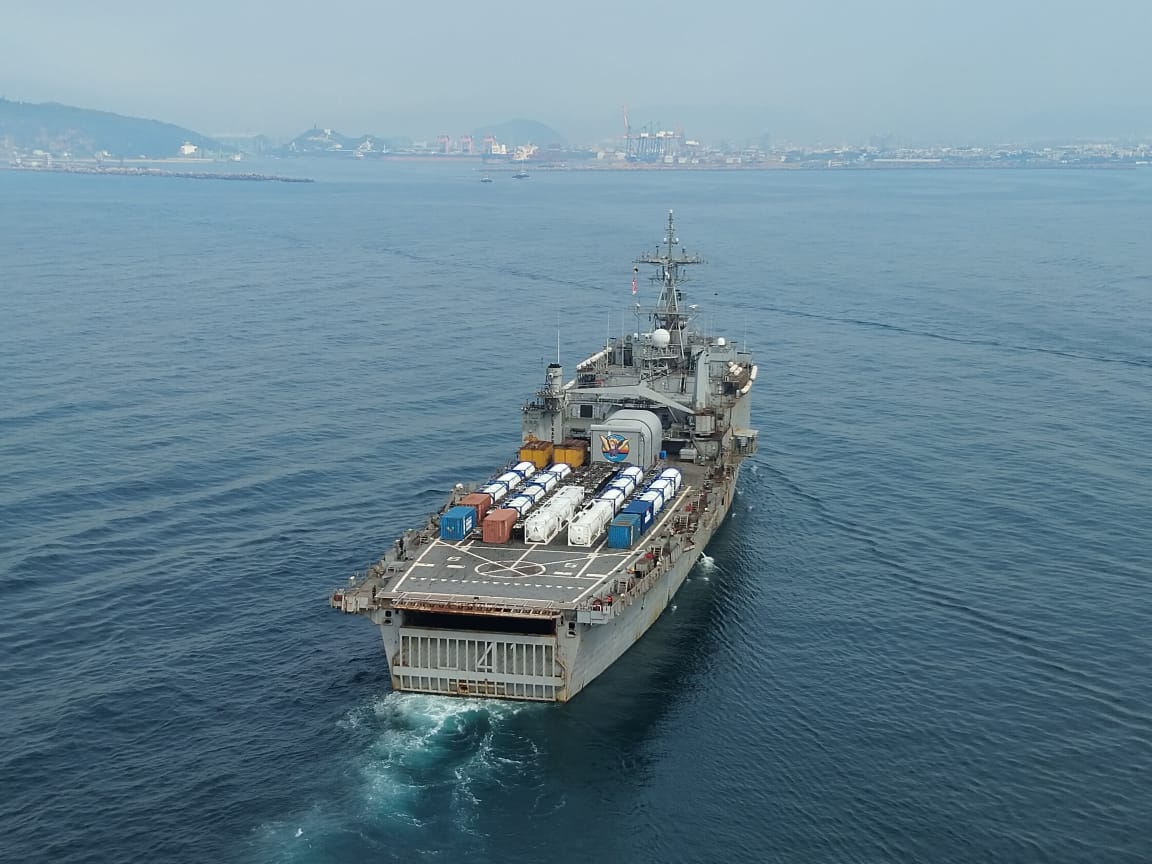
The early 90s saw decreasing availability of the Petyaclass ships due to obsolescence. To address this, the Indian Navy rebased the Rajputclass destroyers, the Khukri class corvettes and the INS Trishul (retrofitted with missiles) to Visakhapatnam in the 90s. Renewed force levels helped the Fleet become the flag bearer for India’s ‘Look East’, initiated in the early 90s. The policy marked a strategic shift in India’s perspective of the world and evolved from diplomatic engagement with Southeast Asia to broader security and defence ties across the whole of Asia-Pacific. Subsequently, we have deepened links with Australia, Japan, Vietnam, Singapore and littorals from South East Asia. The Fleet has to its credit many firsts – bilateral naval cooperation between the Indian and Singaporean Navies in 1994, Indo-Thai exercise in May 95, visit to Chinese ports in Aug-Sep 95 after a long hiatus, visit to Brunei and Cambodia in Oct-Nov 96.
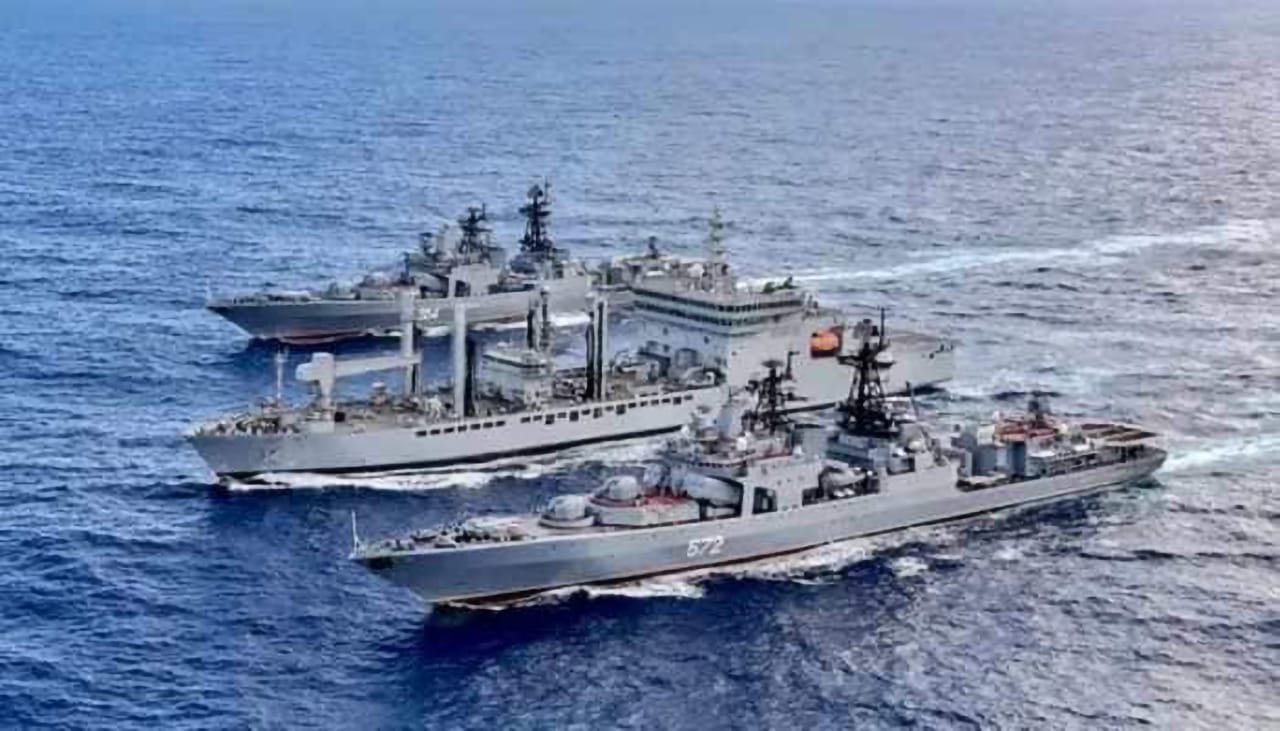
However, the expanding diplomatic role did not impact the tempo of operations. Anti-gun running and smuggling operations including Operation ‘Hyacinth’, ‘Hibiscus’ and ‘Poorab’ were undertaken. Operation ‘Zabardast’led to the apprehension of the LTTE ship MV Ahat. During this operation, Sathashivam Krishna Kumar alias Kittu, a close confidante of the LTTE leader Prabhakaran was killed along with nine other LTTE cadre. In June 1999, during the Kargil conflict, frontline units of Eastern Fleet teamed up with the Western Fleet, as part of Operation ‘Vijay’. The objective of strengthening force levels on the Western seaboard and deterring the adversary from further misadventure was successful.
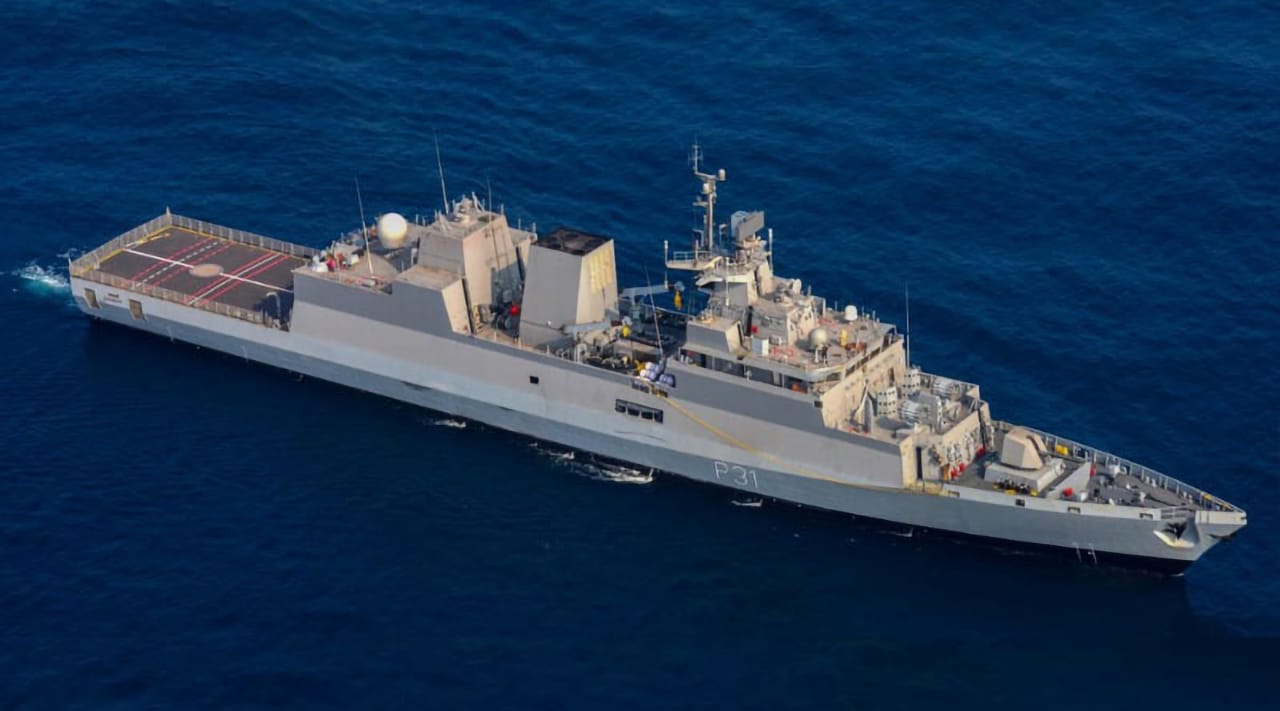
The 2000s saw the Government of India deploying ships of the Indian Navy’s Eastern Fleet on eastbound long range deployments to strengthen military ties with the countries of this strategically important region. For the Fleet, it provided an opportunity to further enhance its operational capabilities, reach and sustenance. ‘Look East’ had transformed to ‘Act East’. The Fleet deployed and, continues to deploy ships, regularly, to Australia, Bangladesh, Brunei, Cambodia, China, Indonesia, Japan, Malaysia, Myanmar, Philippines, Russia, Singapore, Sri Lanka, South Korea, Thailand, USA, and Vietnam amongst others.
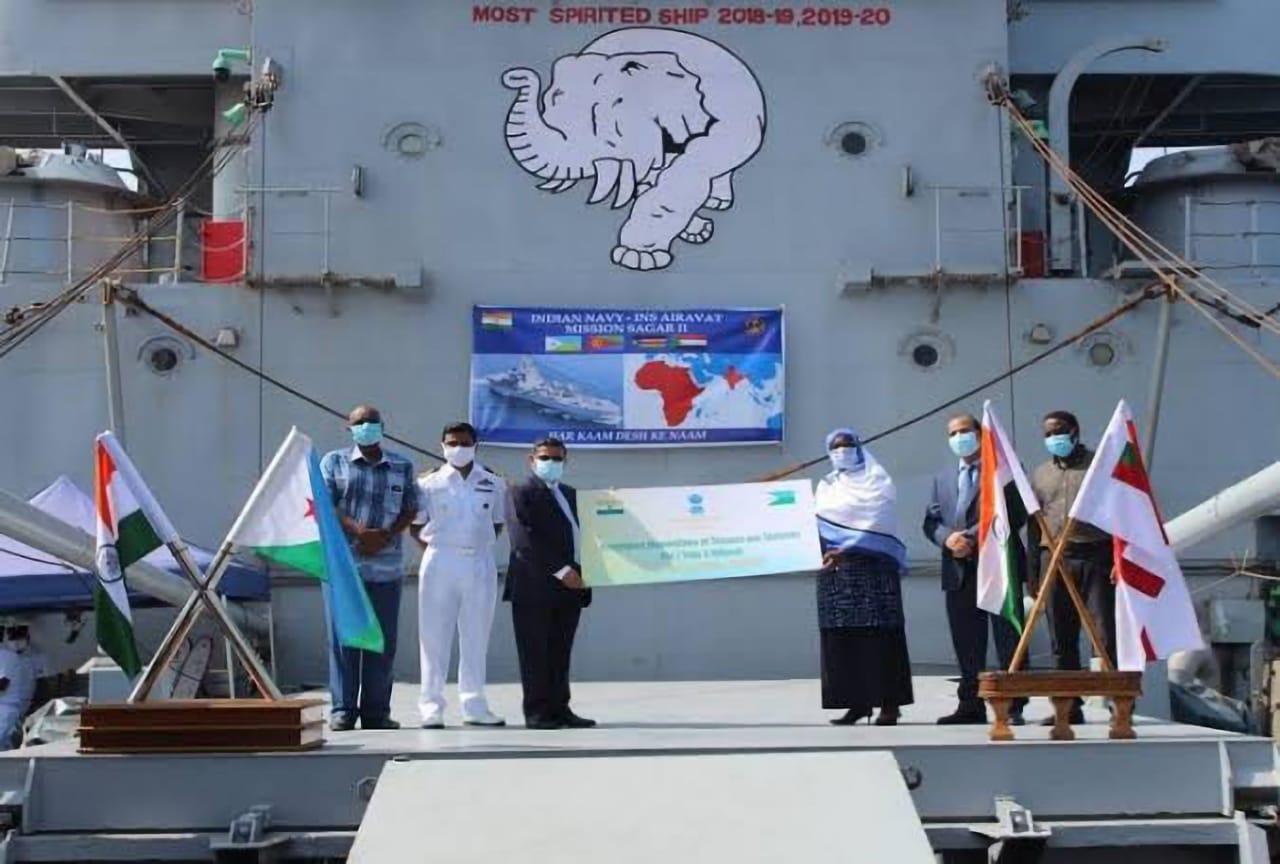
As a part of the Indo-US military co-operation for Operation ‘Enduring Freedom’, the Indian Navy launched Operation Sagittarius. This operation saw Eastern Fleet ships escorting US Navy High Value Units (HVU) through the Malacca Strait. More than 24 HVUs were safely escorted by the Indian Navy. During Operation Parakram in 2002-03, units of the Fleet were placed on high alert and deployed to the Western coast to strengthen deterrence. The Fleet units were poised for both blockade of sea routes and engagement as ordered. Further, in pursuance of our philosophy of assisting maritime neighbours, on request from Mozambique, Eastern Fleet ship Savitri, along with other Indian Navy units, was deployed off Maputo in Mozambique in May-Jul 2004 for providing coastal security during the World Economic Summit and Afro-Pacific-Caribbean (APC) heads of state summit in Maputo.

The 2004 Indian Ocean Tsunami was one of the biggest natural calamities faced by the region. Within 12 hours, the Indian Navy deployed 27 ships, 19 helicopters, six aircraft and over 5000 personnel for Humanitarian Assistance and Disaster Relief (HADR) to the affected areas, both within and outside India. The Eastern Fleet was at the forefront of the relief efforts on India’s Eastern Seaboard as also our maritime neighbours. The Indian Navy teams oversaw supplies of food and drinking water; shelter and medical assistance; ensured sanitation and hygiene; restored water and power supply, and provided rescue facilities, to meet further contingencies like spread of epidemics. Eastern Fleet units Rajput, Ranjit, Ranvijay, Khukri, Khanjar, Kirch, Magar, Gharial, Ghorpad, Sharabh, Sukanya and Jyoti were involved in these operations. The Tsunami response reinforced Indian Navy’s reputation as a credible maritime force with substantial reach and enhanced India’s standing as a trustworthy regional power, capable of providing help to friendly nations. Similarly, when an earthquake hit Yogyakarta, in Indonesia, in May 2006 and devastated the place, INS Rajput, deployed in the Malacca Strait was immediately diverted for the relief mission, Operation ‘Marham’, during which the ship carried relief stores and medical aid to the affected areas, and provided health and sanitation assistance. Rajput’s rapid response was widely appreciated by the local media, population and the Indonesian Navy.
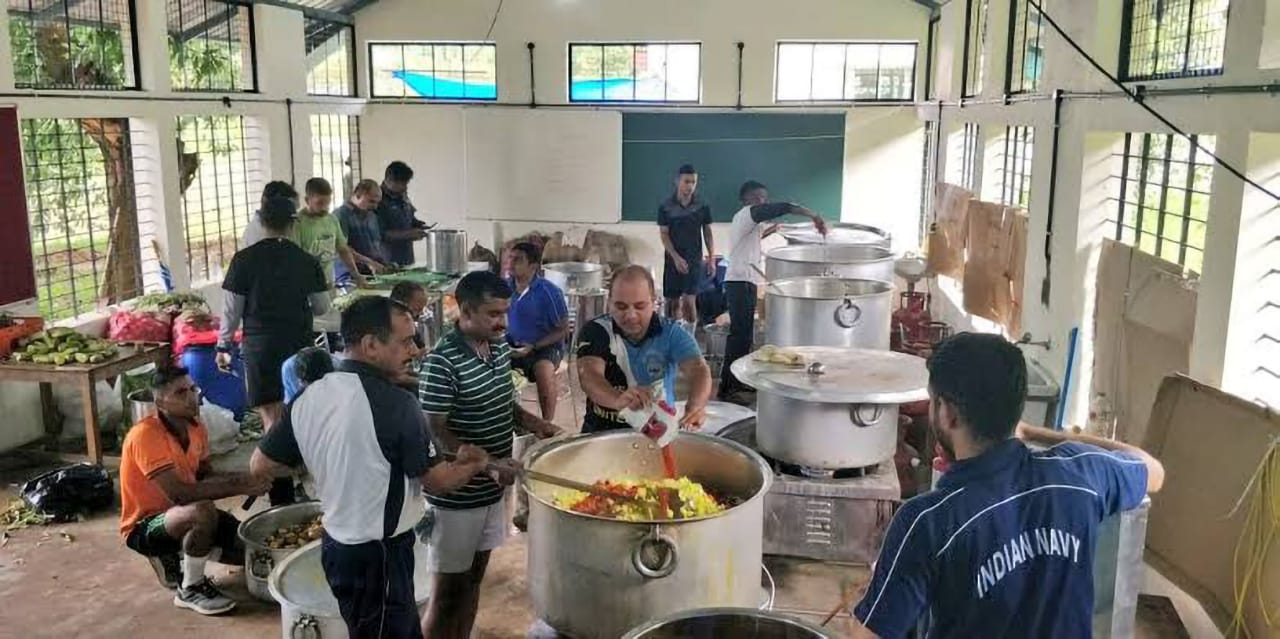
The President’s Colour represents the spirit and tradition of a fighting unit and bear testimony to its many deeds of heroism and valour. In recognition of its contribution towards national security, this was awarded to the Eastern Fleet on February 13, 2006. The Colour presentation accompanied the first ever Presidential Fleet Review in Visakhapatnam in which the Fleet played an important role in planning and execution of the event.
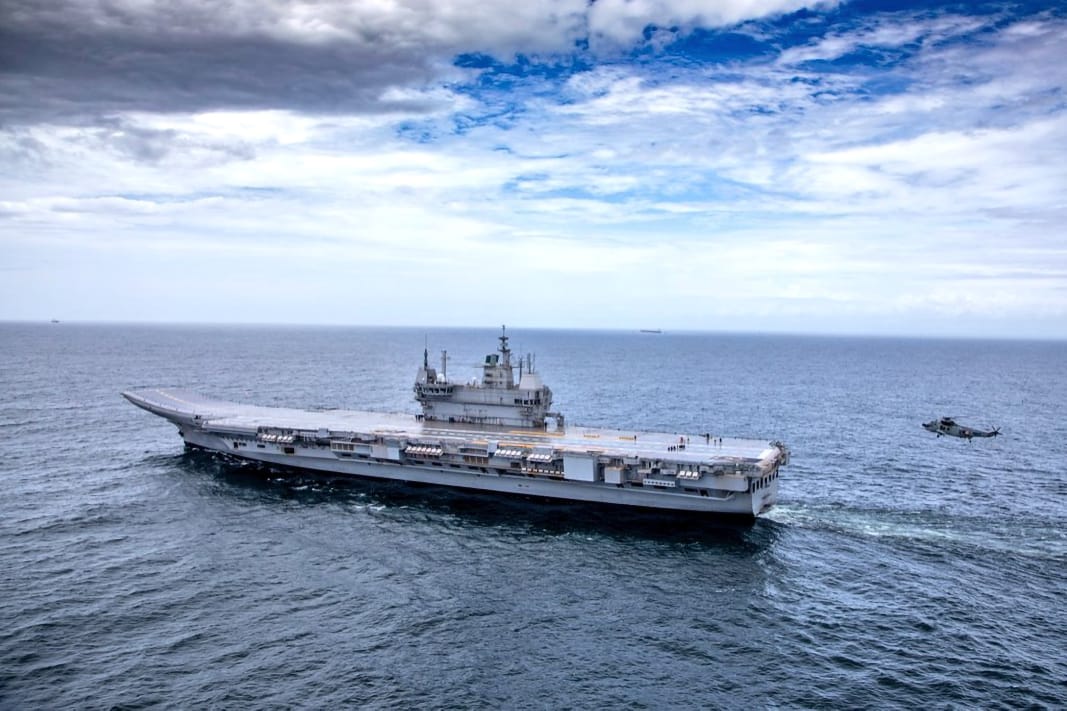
Regular force reviews and strategic assessments led to a substantial increase in the Eastern Fleet assets. By early 2007 the Fleet had five Rajput class destroyers, eight Khukri and Kora class missile corvettes, two Sukanya class patrol vessels, four amphibious ships, the tanker, Jyoti and organic helicopters. Four missile corvettes of the 1241 RE class also joined the Fleet in 2008. The Landing Platform Dock Jalashwa (Ex USS Trenton) joined the Eastern Fleet in 2007, paving the way for standoff beaching and transport of over 1000 troops onboard. The commissioning of other larger class of amphibious ships further added to this capability. Incidentally, the Eastern Fleet is the home to a major component of the Indian Navy’s amphibious lift capabilities. The Fleet, with increasing assets, has over time expanded its operational and humanitarian footprint. Operation Blossom was carried out in Feb-Mar 2011 wherein Jalashwa was tasked to evacuate Indian citizens from war torn Libya. Similarly, Sukanya played a key role in providing water (Operation neer) to Male when the Male Water and Sewerage Company in December 2014, suffered damage. Some other illustrative (but not exhaustive) instances of HADR operations include INS Sumitra to Bangladesh on Jun 2017, after Cyclone Mora, INS Airavat in Jan 2020 to Madagascar after Cyclone Diane (Op Vanilla) and as escort for World Food Programme ships to south Somalia in Jun 2020.
The past decade has seen further capability enhancement of the Eastern Fleet with commissioning and induction of three indigenous Shivalik class frigates, four indigenous Kamorta class corvettes and two indigenous Naval Offshore Patrol Vessels firmly reinforcing the Indian Navy’s enduring belief in Atmanirbhar Bharat. The addition of fleet tanker Shakti further enhanced the Eastern Fleet’s reach and sustenance abilities.
The current era is about multilateralism and enhancing inter-operability. The Eastern Fleet has been at the forefront of this approach. Ships of the Eastern Fleet regularly exercise with the US Navy (Malabar), Japanese Maritime Self Defence Force (JIMEX), Republic of Singapore Navy (SIMBEX), Russian Navy (INDRA), Sri Lankan Navy (SLINEX), Royal Australian Navy (AUSINDEX) as also with navies of Indonesia, Malaysia, Myanmar and Thailand.
One of the most significant events on the diplomatic front for the Eastern Fleet was the pivotal role played by it in the International Fleet Review hosted by the Indian Navy in Visakhapatnam in February 2016. This was particularly significant on account of the fact that Visakhapatnam had been struck by a devastating cyclone, ‘Hudhud’, in October 2014. Infrastructure was severely affected, large numbers of trees were uprooted, electricity cables damaged, supply disrupted, roads and access lanes blocked. Severe shortage of essential items was experienced throughout the city. The Fleet was in the forefront providing manpower, equipment, water, food, medicines and repair tools to residents of Visakhapatnam and in clearing the airport of debris to make the runway functional. It provided technical teams to assist in restoration of essential supplies, road clearance and to provide accessibility. About 500 personnel from ships were deployed for over a week to restore normalcy. Thus, when the IFR 2016 was conducted, there was an outpouring of gratitude by Visakhapatnam and its citizens towards the Navy and the Eastern Fleet for their yeoman service.
The year gone by, 2020, has seen the Eastern Fleet deployed across the Indian Ocean, South China Sea and beyond, both for humanitarian operations and enhanced operational posture. Covid-19 saw many Indians stuck in countries in the region and beyond. Eastern Fleet units, as part of OperationSamudra Setu helped in repatriation of 3992 Indian citizens. Concurrently, Eastern Fleet units also delivered critical food and medical supplies as part of Mission Sagar to Madagascar, Comoros, Sri Lanka, Bangladesh, Vietnam and Cambodia. When 20 Indian soldiers were killed in action on the icy heights of Galwan by Chinese troops, the Eastern Fleet was operationally poised to prevent any misadventure in India’s areas of maritime interest. In Operation Samudra Setu II, this year, ships of the Fleet have been proactively deployed for shipment of Liquid Medical Oxygen (LMO) and other medical equipment to meet the challenges of second wave of Covid.
Today, the Eastern Fleet is a multi-faceted composite force of about 30 units with the capability to defend our national maritime interests along the Eastern seaboard and beyond. It can reach out to all areas of interest, sustain for significant durations and engage with maritime neighbours to strengthen regional security. The likely addition of the indigenous Aircraft Carrier, Vikrant, by 2022 augurs well for the Eastern Fleet. The combat capability, reach and versatility of the carrier would offer an incomparable military instrument with its ability to project air power over long distances. This will provide a major operational fillip to the Indian Navy’s Eastern Fleet. There is also the happy historical connect of the first INS Vikrant’s role as Flagship of the Eastern Fleet in 1971 war.

Just a month after its birth, the Fleet had cut its teeth in operations in the Indo-Pak war of 1971. Over the years, the Fleet has grown and matured not only in terms of assets but also operational reach, sustenance and effectiveness. The Fleet undertakes a large gamut of tasks in this region – maintaining forward presence and carrying out maritime surveillance, keeping India’s Sea Lines of Communication free, fostering cooperation with Eastern maritime neighbours through bilateral/multilateral exercises, monitoring the area for gun running, narcotic trade, poaching and combating low intensity maritime threats such as piracy, terrorism and hijacking. As she turns 50, the Eastern Fleet takes pole position as the vanguard of a resurgent maritime India. It certainly is a golden dawn for the Sunrise Fleet.
Cmde Srikant Kesnur is associated with the Naval History Project and Cdr Utkarsh Sharma is serving with the Eastern Fleet. Views are personal.